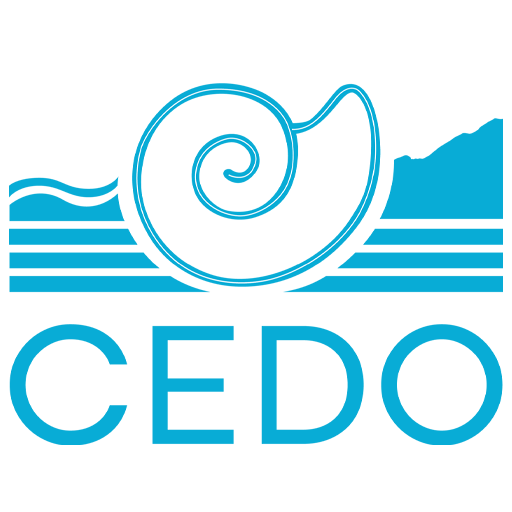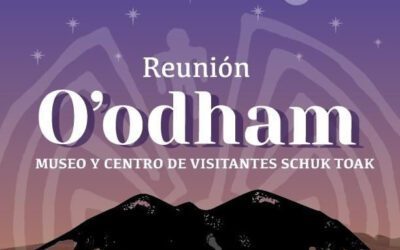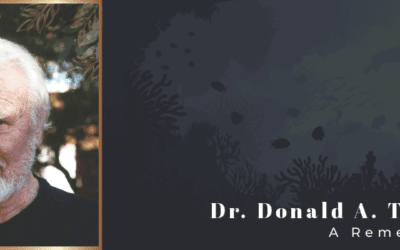[vc_row][vc_column][vc_separator][vc_column_text]By: Efraín Wong, Leonor López H., Ángeles Sánchez C., René Loaiza V.
Editor: Socorro González B.[/vc_column_text][/vc_column][/vc_row][vc_row][vc_column width=”1/3″][vc_single_image image=”1136″ img_size=”large” add_caption=”yes” style=”vc_box_border” onclick=”link_image”][vc_single_image image=”1137″ img_size=”large” add_caption=”yes” style=”vc_box_border” onclick=”link_image”][/vc_column][vc_column width=”2/3″][vc_column_text]The northern Gulf of California is an eco-region limited to the south by the Tiburon and Ángel de la Guarda islands, and to the north by the Colorado River Delta. This river, along with three other riparian systems in the northern coast of Sonora, have deposited more than 5 km of sediment in the coastal watersheds, creating a shallow and sloping platform with a maximum depth of 200 m. The northern Gulf is characterized by its extreme tides, temperatures, and salinity that feed the ocean currents, which distribute nutrients, larvae, and food to the entire region during each season, connecting populations and communities throughout the ecosystem.
These conditions have generated a high degree of endemism and a wealth of species with 47% of the biodiversity of the entire Gulf of California present in these waters, including 2,258 invertebrate species, 367 fish species, 7 reptile species, 24 marine mammal species, and 146 marine bird species.[/vc_column_text][/vc_column][/vc_row][vc_row][vc_column][vc_text_separator title=”BETWEEN TWO RESERVES, UNESCO WORLD HERITAGE SITE”][/vc_column][/vc_row][vc_row][vc_column width=”1/2″][vc_column_text]The Upper Gulf of California and Colorado River Delta Biosphere Reserve, a UNESCO World Heritage Site situated between two Reserves, is located where the Colorado River has the greatest impact. This reserve is recognized worldwide for its high productivity and biodiversity. Its wetlands support important fisheries, migratory bird populations, and unique and threatened species such as the desert pupfish (Cyprinodon eremus) and the Yuma clapper (Rallus longirostris yumanensis). Its waters are home to the world’s most endangered cetacean, the vaquita porpoise (Phocoena sinus) and the totoaba (Totoaba macdonaldi), a protected fish whose fishing is a fundamental part of the origins of the communities in the region.
The main challenges to the region include ensuring an adequate water supply from the Colorado River, fisheries management, and getting rid of illegal totoaba fishing and vaquita bycatch. By law, fishing is prohibited in the core zone of the Reserve and an Environmental Impact Statement (EIS) is required to fish in the buffer zone. Gillnets and longlines (cimbra) are prohibited in the vaquita refuge and in a large area decreed in 2015 to protect this cetacean for two years.[/vc_column_text][/vc_column][vc_column width=”1/2″][vc_single_image image=”1134″ img_size=”large” alignment=”right” style=”vc_box_border” onclick=”link_image”][vc_single_image image=”1147″ img_size=”large” alignment=”right” style=”vc_box_border” onclick=”link_image”][/vc_column][/vc_row][vc_row][vc_column width=”1/2″][vc_single_image image=”1139″ img_size=”large” style=”vc_box_border” onclick=”link_image”][vc_single_image image=”1148″ img_size=”large” style=”vc_box_border” onclick=”link_image”][/vc_column][vc_column width=”1/2″][vc_column_text]El Pinacate and Gran Desierto de Altar Biosphere Reserve is considered a priority region in Mexico. This Reserve is located between the municipalities of Puerto Peñasco, Plutarco Elías Calles, and San Luis Río Colorado in the State of Sonora. The Pinacate and Gran Desierto de Altar is within the Sonoran Desert, considered the desert with the greatest diversity compared with the Chihuahuan, the Great Basin, and the Mojave. This is one of the reasons why there are more protected areas in the Sonoran Desert than in any other desert in the world.
This region is considered an important cultural site for the Tohono O’odham who believe that the origin of their creation was in Pinacate Peak, where they still perform sacred ceremonies. Furthermore, there is evidence of archaeological remains that are 20,000 years old. This is a magical place of great beauty, with unique and unusual creatures and plants, as well as remarkable geological features. This reserve features an imposing volcanic shield, with lava flows, cineritic cones, and giant craters. It is also the largest active dune field in North America.
Studies and observations show there are 540 species of vascular plants, 40 species of mammals, 200 species of birds, 40 species of reptiles, as well as amphibians, freshwater fish, and other endemic, threatened, and endangered species.[/vc_column_text][/vc_column][/vc_row][vc_row][vc_column][vc_text_separator title=”Vibrant Coastal Communities”][vc_text_separator title=”San Felipe, Baja California” title_align=”separator_align_left”][/vc_column][/vc_row][vc_row][vc_column width=”2/3″][vc_column_text]The port of San Felipe is located south of the Mexicali valley in Baja California, in the extreme southwest of the Upper Gulf Reserve, just 193.12 km south of the US-Mexico border. The history of San Felipe begins with the expeditions of Francisco de Ulloa, a captain in Cortez’s army. it is said that De Ulloa sailed the bay in September 1535 and later gave it its original name of Santa Catalina.
Around 1930 San Felipe was only considered a pier, since it only had a population of 300 inhabitants. Around 1939 it was registered as a fishing camp. By 1940, its population reached 427 inhabitants. By 1980 it was upgraded to a port, with 6197 inhabitants. Artisanal fishing is the main source of income for this community, in addition to sport fishing and tourism. The port facilities of San Felipe are exclusive for loading and unloading fishery products.
San Felipe is formed by a bay almost 20 km long with cliffs in the north. In front of its coast is the island Rocas Consag, also known as El Piedrón, center of the vaquita population distribution.
In 2015, new laws were enacted to protect the vaquita and totoaba and prohibiting the use of gillnets and longlines in most of the fishing areas of this community, inside and outside the Reserve, so the fishermen were financially compensated.
Main fisheries: blue shrimp, curvina, milkfish, and sierra.[/vc_column_text][/vc_column][vc_column width=”1/3″][vc_single_image image=”1141″ img_size=”large” alignment=”right” style=”vc_box_border” onclick=”link_image”][vc_single_image image=”1150″ img_size=”large” alignment=”right” style=”vc_box_border” onclick=”link_image”][/vc_column][/vc_row][vc_row][vc_column][vc_text_separator title=”The Gulf of Santa Clara, San Luis Río Colorado, Sonora” title_align=”separator_align_left”][/vc_column][/vc_row][vc_row][vc_column width=”2/3″][vc_column_text]Like other communities in this area, this town was born in the 1930s thanks to totoaba fishing. Located almost at the mouth of the Colorado River, 115 km south of San Luis, this community is the heart of the Upper Gulf Reserve. Due to the number of residents, it is considered the third most inhabited town in the municipality, after the town of Luis B. Sánchez and the city of San Luis Río Colorado, capital of the municipality. Its tides are the most extreme in the entire Gulf of California (10 m vertical), which means that in this area there are strong currents and turbid waters.
This community generates 50% of the coastal fishing production in the Reserve. The curvina (Cynoscion othonopterus) fishery, which disappeared and re-emerged in 1993, has had a great social and economic impact on the community. Curvina and totoaba are species that massively group together to migrate to the Colorado River delta to spawn. China’s black market increased the demand for totoaba swim bladder, leading to illegal fishing of this protected species. This is believed to be the main reason for the rapid decline of the vaquita, which incidentally becomes entangled in totoaba fishing nets.
Main fisheries: blue shrimp, curvina, milkfish, and sierra.[/vc_column_text][/vc_column][vc_column width=”1/3″][vc_single_image image=”1135″ img_size=”large” alignment=”right” style=”vc_box_border” onclick=”link_image”][vc_single_image image=”1151″ img_size=”large” alignment=”right” style=”vc_box_border” onclick=”link_image”][/vc_column][/vc_row][vc_row][vc_column][vc_text_separator title=”Puerto Peñasco, Sonora” title_align=”separator_align_left”][/vc_column][/vc_row][vc_row][vc_column width=”2/3″][vc_column_text]From the municipality of Puerto Peñasco to the community of Puerto Lobos, passing through Bahía San Jorge, Punta Jagüey, Santo Tomás, and Desemboque in the municipality of Caborca, there are about 60 thousand people. Historically, these communities have been considered privileged sites for fishing, since each year more than 17 thousand tons of fishing resources are captured, with a value of 190 million pesos.
La Roca or Rocky Point, as residents and tourists colloquially call Puerto Peñasco, is located in the extreme southeast of the Upper Gulf Reserve. This community had its origin as a temporary fishing camp for totoaba fishing in the late 1920s. Later, the fishermen and their families settled permanently. After totoaba, the blue shrimp (Litopenaeus stylirostris) fishery was the foundation of the local economy. In the 1960s, the port was built on what was once an estuary, to shelter a fleet of more than 200 industrial ships, at its peak. It was also an important shipyard used to build and repair large ships for all of Latin America. Puerto Peñasco has a Fisheries Office (National Commission of Aquaculture and Fisheries, CONAPESCA) to which all the communities from Puerto Peñasco to Puerto Lobos report their arrival notices. Due to its proximity to the United States, tourism has always been an important economic activity in the area that has been growing and consolidating year after year and has currently made Puerto Peñasco one of the most important tourist destinations in northern Mexico.
Main fisheries: blue shrimp, crab, milkfish, sole, Chinese black snail, scallop, and sierra.[/vc_column_text][/vc_column][vc_column width=”1/3″][vc_single_image image=”1140″ img_size=”large” alignment=”right” style=”vc_box_border” onclick=”link_image”][vc_single_image image=”1133″ img_size=”large” alignment=”right” style=”vc_box_border” onclick=”link_image”][/vc_column][/vc_row][vc_row][vc_column][vc_text_separator title=”References:” title_align=”separator_align_left”][vcj_list list_content=”Northern Gulf of California Tide Calendar 2016: CEDO’s 35th Anniversary, Creating Alliances for Sustainability. Intercultural Center for the Study of Deserts and Oceans (CEDO).” style=”style3″ icon_color=”#6fabce”][vcj_list list_content=”Ministry of the Environment and Natural Resources (2018). Government of Mexico. Mexico. Retrieved from https://www.gob.mx/semarnat/articulos/reserva-de-la-biosfera-el-pinacate-y-gran-desierto-de-altar-161908″ style=”style3″ icon_color=”#6fabce”][/vc_column][/vc_row][vc_row][vc_column][vc_separator][vc_empty_space][vc_column_text][ctct form=”1153″ show_title=”false”][/vc_column_text][/vc_column][/vc_row][vc_row][vc_column][vc_separator][/vc_column][/vc_row][vc_row][vc_column][vcj_team_member image=”1149″ name=”About the Author:” layout=”style3″ image_ratio=”portrait” color_name=”#ca972e”]Socorro González Barajas
Associate Communication Specialist of Intercultural Center for the Study of Deserts and Oceans.
I was born in the city of Hermosillo, Sonora, I studied professionally in the Bachelor of Hispanic Literatures from the University of Sonora. I have been the coordinator of the Primera Toma cinema club since 1996 and have been involved in courses with themes on Film Language, Literature, Education, Photography and Promotion of Culture and the Arts.[/vcj_team_member][/vc_column][/vc_row]









0 Comments